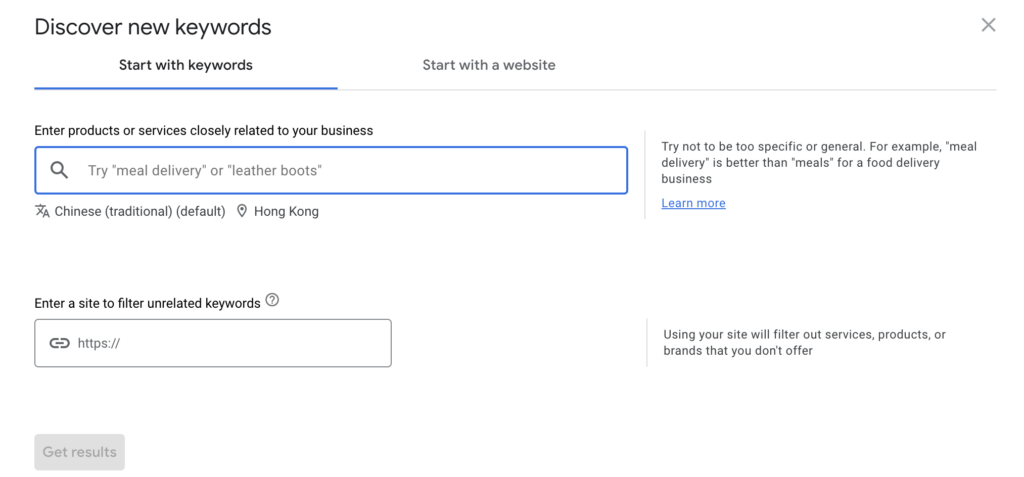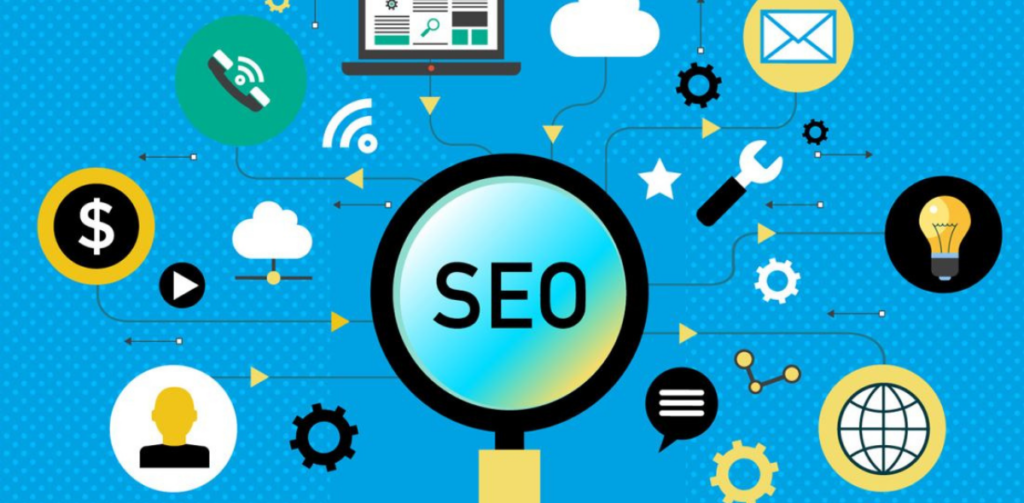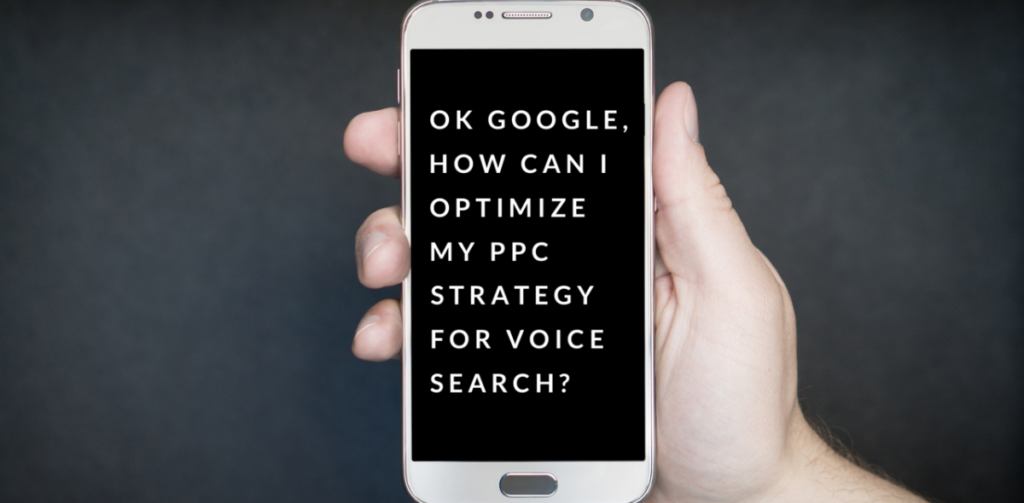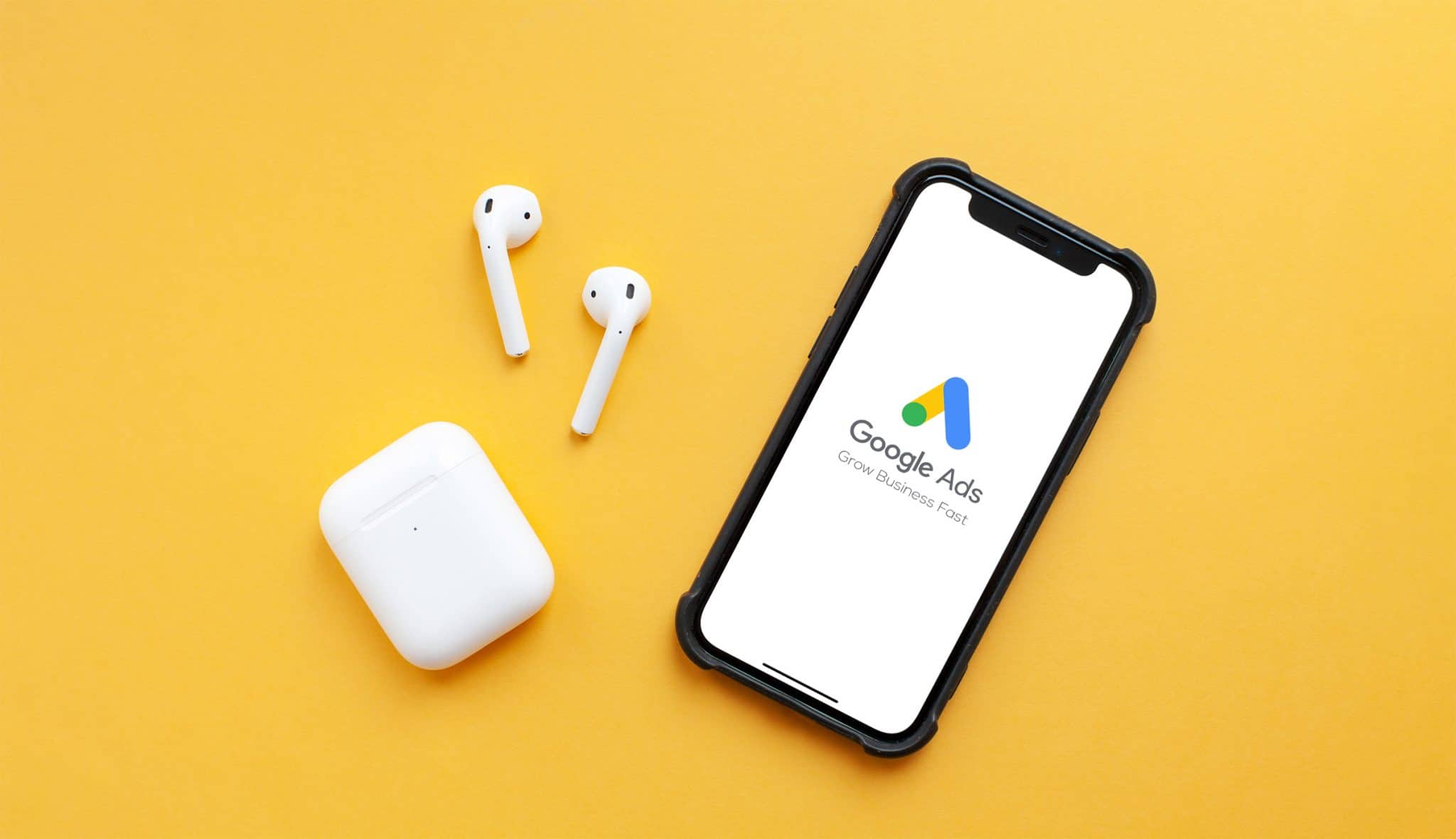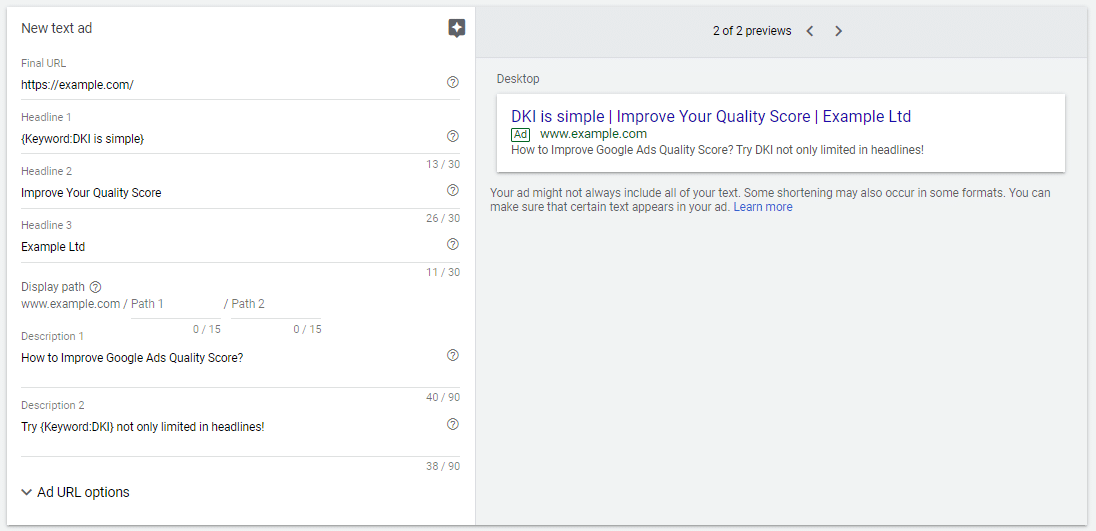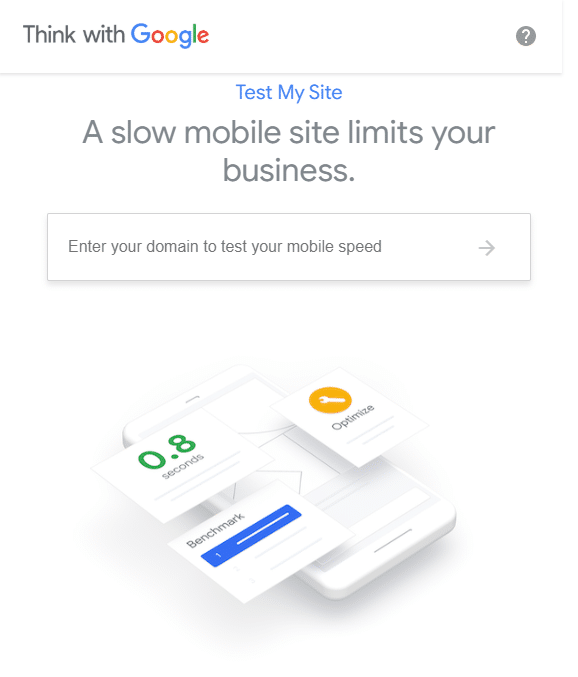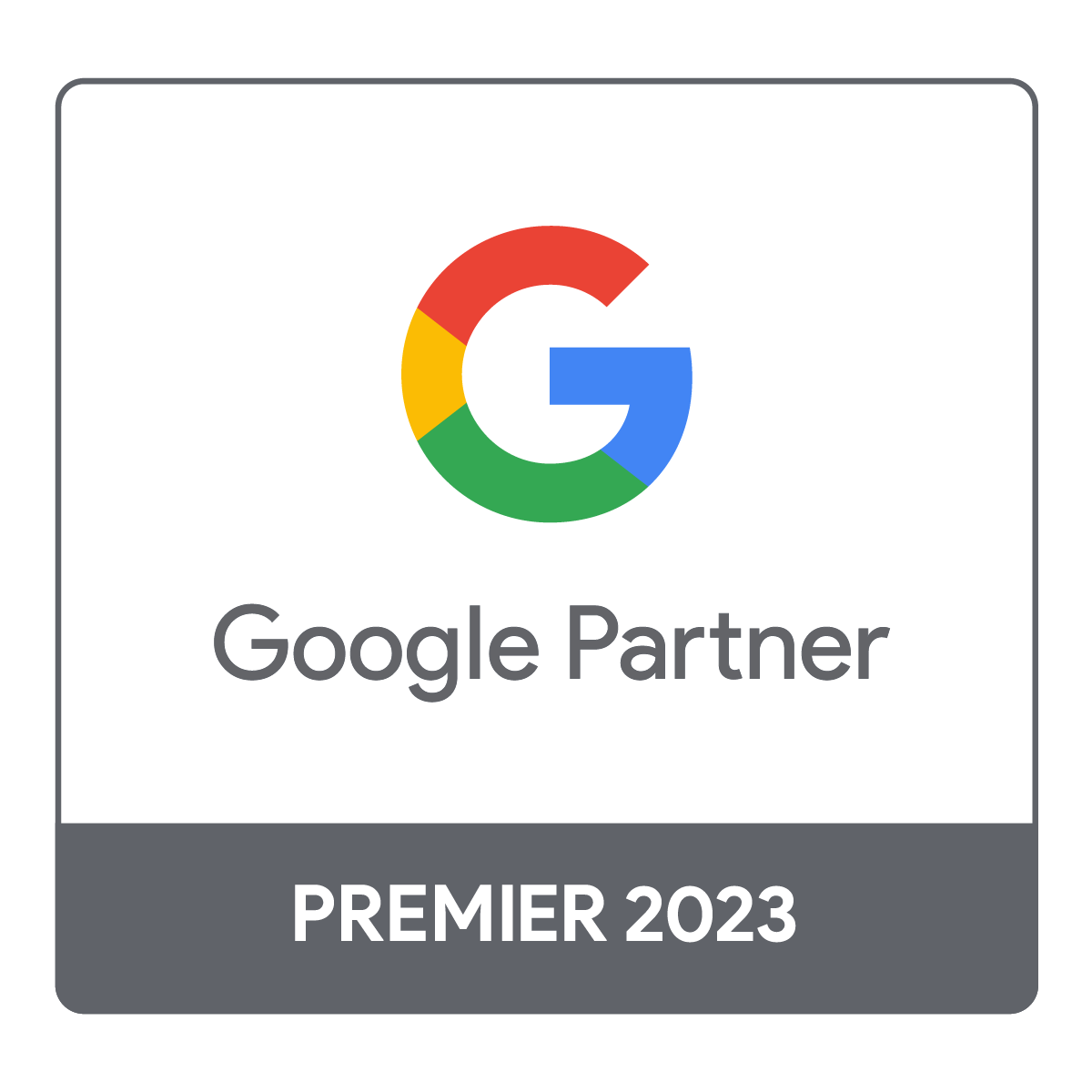PPC advertising is a type of pay-per-click advertising, in which you are charged every time a consumer clicks on your ad. Amazon’s PPC advertising is a form of on-site advertising, where third-party sellers can place PPC ads on Amazon to reach more potential customers.
Table of contents
- Why Is PPC Important for businesses in Amazon?
- Key Metrics of Amazon PPC
- What are the types of Amazon PPC?
- How To Create Sponsored Products Amazon PPC Ads?
- How to do keywords targeting in Amazon?
- How to do product targeting in Amazon?
- How to add Negative Keywords?
- Final thoughts
- What other marketing tactics can you use to beat your competition?
Why Is PPC Important for businesses in Amazon?
As buyers increase in e-commerce platforms (Amazon being the most popular one), there is also an increase of Amazon sellers. By mastering Amazon’s PPC advertising strategies, sellers can stand out from numerous competitors.
If cross-border e-commerce sellers optimize their product pages for Amazon SEO and launch PPC advertising campaigns, consumers who purchase products through the ads may become repeating customers in the future, and there is a greater chance of improving the keyword ranking of product pages.

For Amazon sellers, PPC should be one of the pillars of its digital marketing strategy.
Key Metrics of Amazon PPC
You can evaluate the effectiveness of your Amazon PPC campaigns by examining several metrics, such as Average Cost of Sale (ACoS), Impressions, Clicks, Click-Through Rate (CTR), Total Spend, Overall Sales, Cost Per Click (CPC), and Conversion Rate (which Amazon refers to as Order Session Percentage or OSR).
Average Cost of Sale (ACoS)
ACoS (Average Cost of Sales) is a crucial Amazon PPC metric. It represents the percentage of advertising spend to sales revenue. Lower ACoS indicates better ad performance. Break-Even ACoS is the point where an ad neither makes nor loses money, while Target ACoS is the ideal ACoS for a specific product profit.
The formula below can support the statement above:
ACoS = $ Spent on Advertising / $ made in Sales
Impressions
Impressions represent the number of times an ad is displayed. Low impression rates may result from low bids or the use of overly specific keywords. To address this, advertisers can increase bids or add more commonly used keywords. Clicks are also important to monitor, as ads with high impression rates and low click rates indicate poor targeting.
Clicks
Clicks represent the number of times an ad has been clicked on, which is important to track along with impressions for two reasons:
- A high click rate with low sales indicates an issue with the product page. The ad directs people to the page, but something is causing them to leave without purchasing, suggesting that either the wrong audience is being targeted or the product page needs improvement.
- A low click rate with high impressions indicates a targeting problem where many people view the ad but aren’t interested in purchasing the product. This is typically due to poor keyword selection that doesn’t match user intent, and calls for a reevaluation of keywords strategy.
Click-Through-Rate (CTR)
Click-Through Rate (CTR) is a metric that indicates how effective an ad is. CTR is calculated by the following formula.
Click-Through Rate = Clicks / Impressions
A higher CTR is more desirable as it indicates that the ad is compelling enough to persuade shoppers to click through. On the other hand, a lower CTR suggests that the ad is not attractive enough. To improve CTR, advertisers can adjust ad copy, product images, or ad placement, and compare their ad to competitors’ to determine what needs optimization. A CTR of less than 10% suggests poor keyword performance and warrants pausing those keywords.
Total Spend
The Total Spend metric refers to the overall amount of money spent on advertising campaigns. To ensure maximum profits, it is important to keep this metric as low as possible. However, an insufficient Total Spend can be just as detrimental to campaign success as unprofitable campaigns, as it may indicate a lack of ad displays. To improve campaign visibility, advertisers should review their targeting and keyword strategies to increase impressions.
Overall Sales
The metric Overall Sales encompasses both sales resulting from advertising and those generated organically without ad clicks. A recommended benchmark for the ratio of Advertising Sales to organic sales is 6:4.
Average Cost Per Click
The Cost Per Click (CPC) metric represents the amount spent on an ad each time a user clicks on it. It is not viable for an ad promoting a $1 item to have a high CPC, whereas it might be feasible for an ad promoting a product that costs $1000. Therefore, when optimizing ads, it is critical to consider the expected revenue from each sale.
Amazon employs the Average CPC (aCPC) metric to provide a comprehensive cost for the entire campaign by calculating the average CPC for all the keywords used.
Understanding the key metrics above is crucial to your success in Amazon. Without the knowledge of Amazon metrics, you simply cannot evaluate the performance of your campaign.
What are the types of Amazon PPC?
There are 3 types of Amazon PPC:
- Sponsored Brands – 40% sellers chooses this option
- Sponsored Products – close to 80% sellers prefers this option
- Sponsored Display – 30% sellers uses this option
Sponsored Brands

Sponsored Brands, formerly known as Headline Search Ads, allow sellers to advertise multiple products at once to attract consumers’ attention and increase brand awareness. This type of ad is suitable for cross-border e-commerce sellers who want to promote brand recognition and product lines.
There are 3 types of sponsored brands:
- Product Collection: Includes brand logo, customizable ad title, and two or more products.
- Store Spotlight: Includes brand logo, customizable ad title, and two or more products.
- Video: Displays a single product with a video length of 15-30 seconds. (Image Above)
Sponsored Products
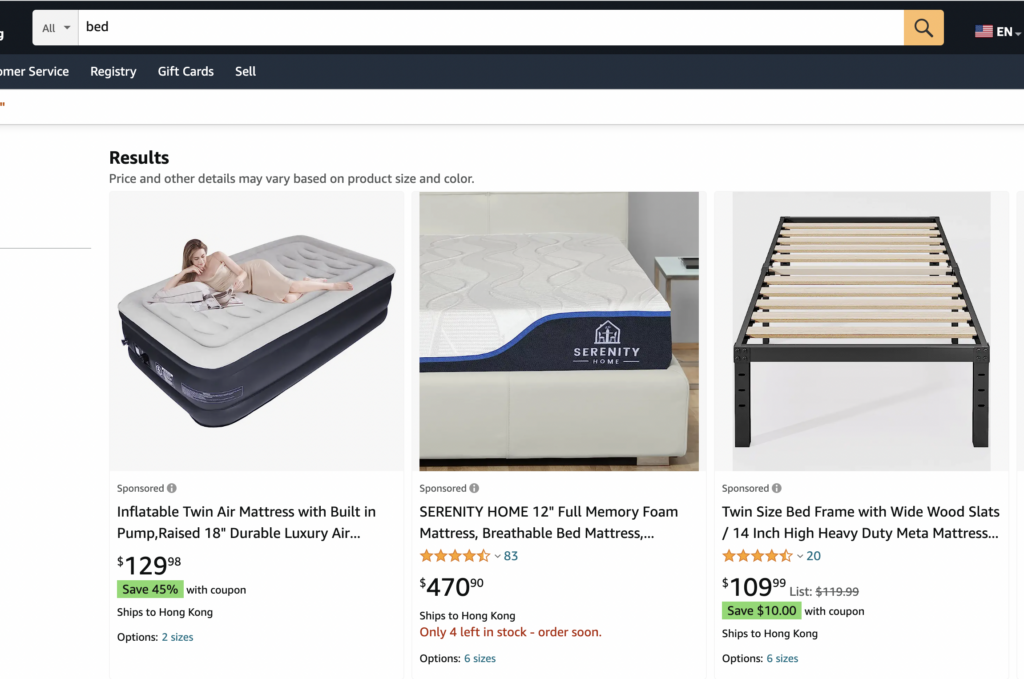
Amazon sellers must apply for Brand Registry on Amazon before advertising with Sponsored Products. When advertising with Sponsored Products, sellers can choose to use automatic or manual ads.
Sponsored Products – Automatic Ads
Automatic ads are suitable for Amazon sellers who are promoting new products. Through automatic ads, sellers can collect keyword data and identify core and related keywords for their brand. Sellers can use the keyword data from automatic ads to analyze which keywords have a higher conversion rate. Once the product listing is selling steadily, the seller can switch to manual ads to save on advertising costs.
Sponsored Products – Manual Ads
Manual ads are suitable for Amazon sellers whose product listing is selling steadily and have sufficient keyword data. Through manual ads, sellers can monitor advertising costs and effectively manage their marketing budget. Sponsored Products is also suitable for novice Amazon sellers who wish to become familiar with PPC advertising operations.ShareLikeDislike
Sponsored Display
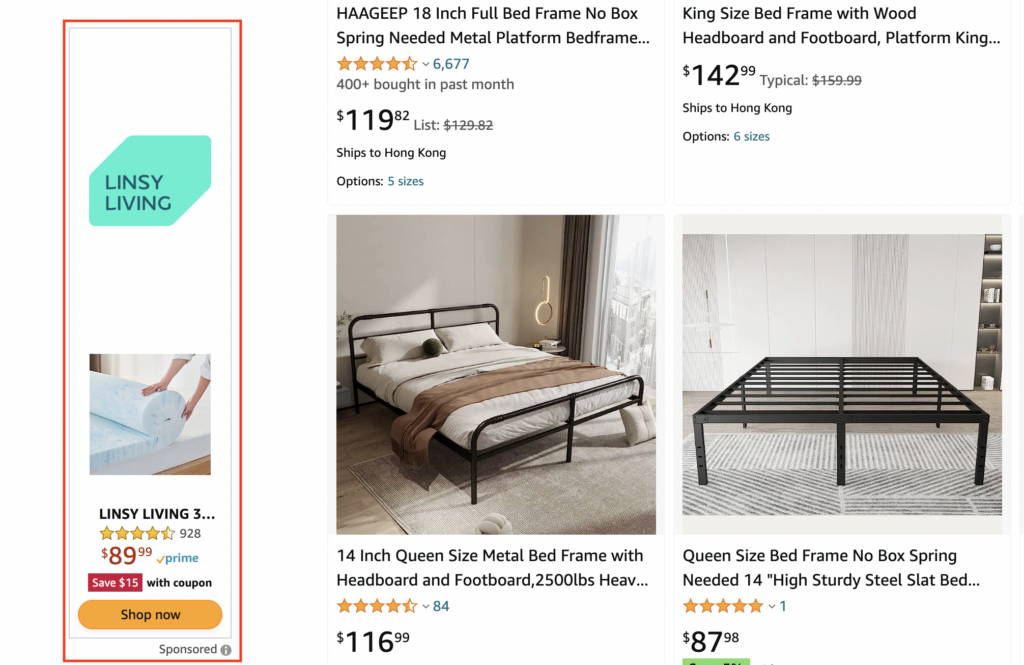
Before advertising with Sponsored Display, Amazon sellers must also first apply for Brand Registry on Amazon. Sponsored Display ads are displayed similarly to Google’s GDN ads, as shown in the figure.
Sponsored Display ads typically appear on Amazon’s external partner websites, such as Netflix and mobile apps, or on Amazon’s product pages, consumer reviews pages, and promotional pages. Sponsored Display ads are suitable for sellers who want to promote brand awareness or compete for sales opportunities from related product pages.
Return of Ads Spending for different types of Amazon PPC
What is ROAS?
ROAS stands for Return on Advertising Spend, which is a marketing metric used to evaluate the performance and financial return of advertising strategies, campaigns, or ad groups.
The formula for calculating ROAS is: ROAS = Advertising Revenue / Advertising Cost.
ROAS First Page Data

Some ad types and strategies are more effective in generating a higher ROAS compared to others. For instance, Sponsored Product ads have the highest sales among all types of PPC ads (especially for small to medium clients).
How To Create Sponsored Products Amazon PPC Ads?
Sponsored products is the easiest type of campaign to set up, and it is one of the most profitable and powerful ad type according to our First Page client database. Therefore, we will be using Sponsored Products as this guide’s example.
1. Log in to Amazon Seller Central and select Advertising > Campaign Manager

2. Create Campaign

3. Choose Sponsored Products
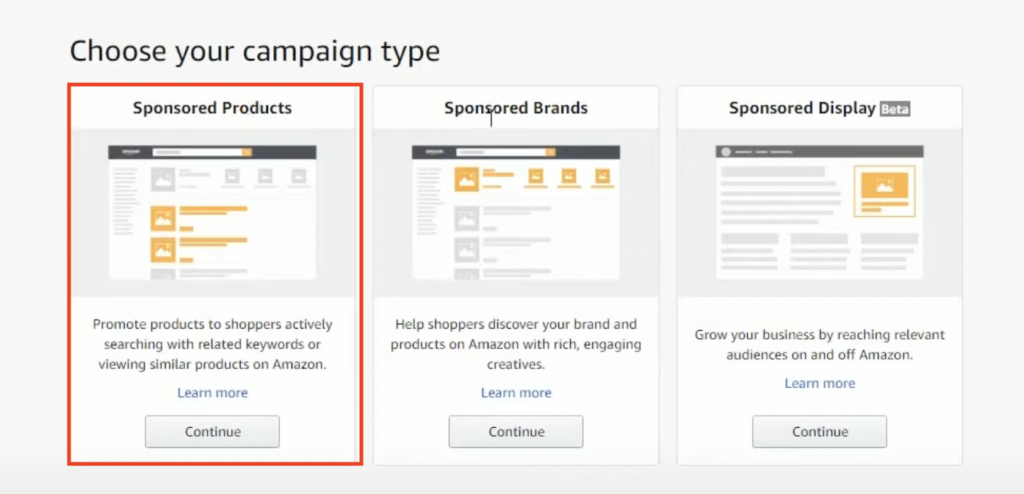
4. Name your campaign name
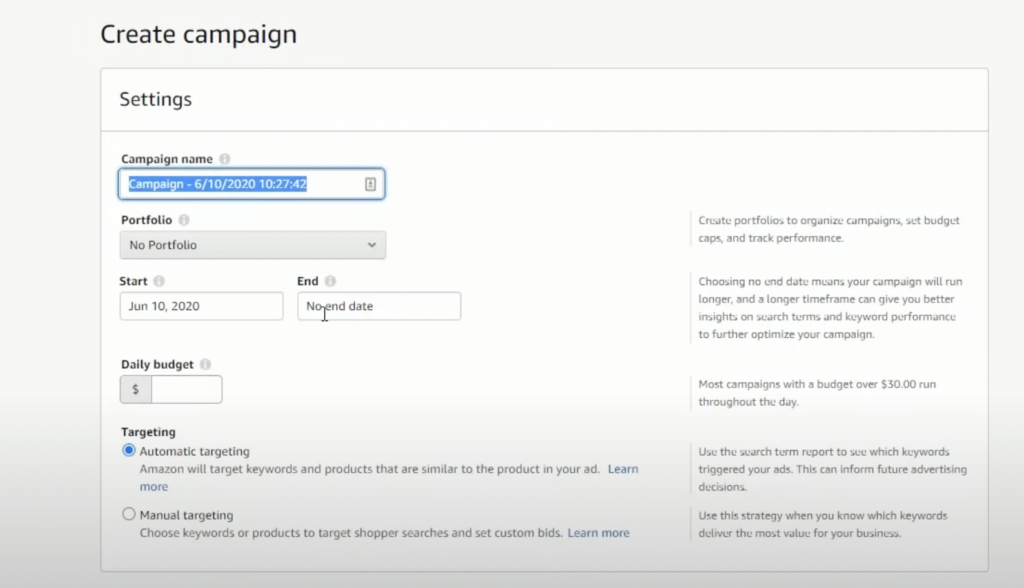
Daily budget can try set to $20 dollars, and please remember to set the Targeting to “Automatic Targeting”. Campaign name can be anything.
5. Select your product
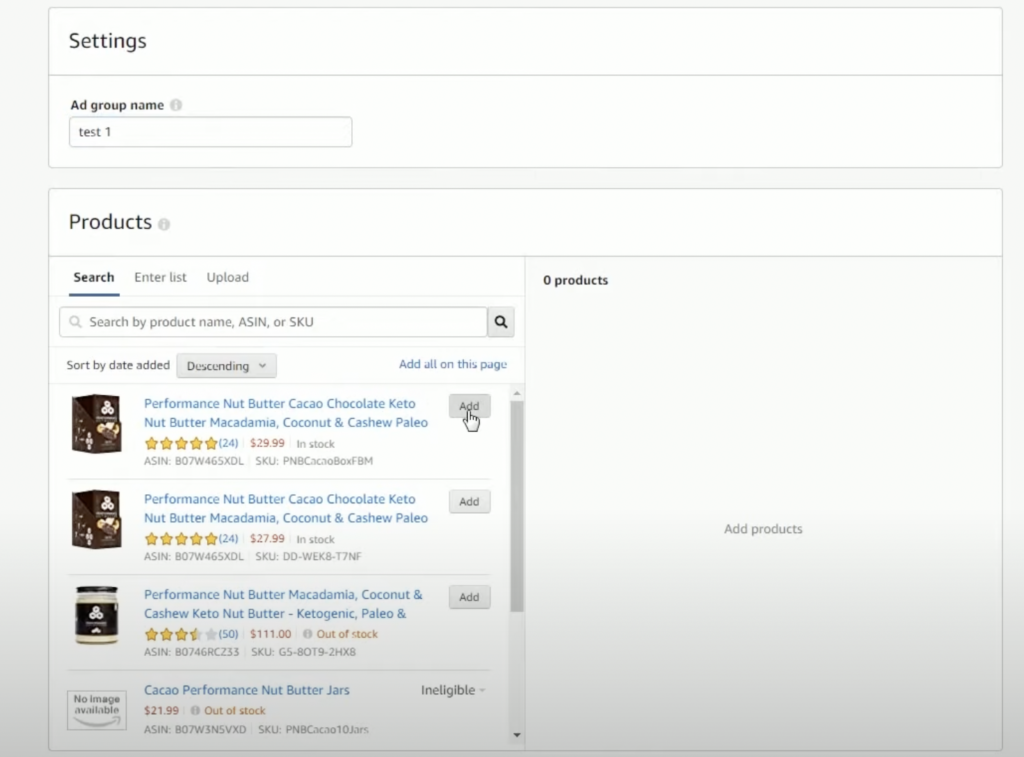
6. Set Bid Amount
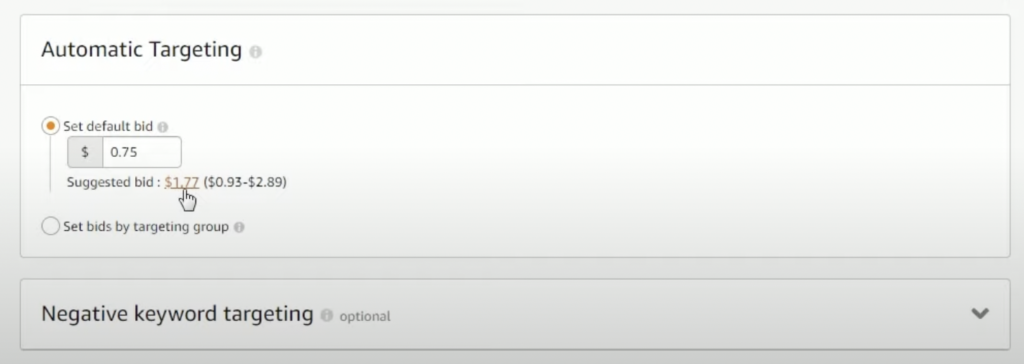
Please start with the suggested bid amount if you are new to Amazon PPC.
7. Launch Campaign

Automatic campaign would be successfully launched.
Keyword research helps you uncover what your target audience is looking for.

How to do keywords targeting in Amazon?
During the campaign creation setting phase, you can actually have Amazon help you with the keyword research.
1. After adding a product, you can scroll down for Amazon’s recommendation keywords.
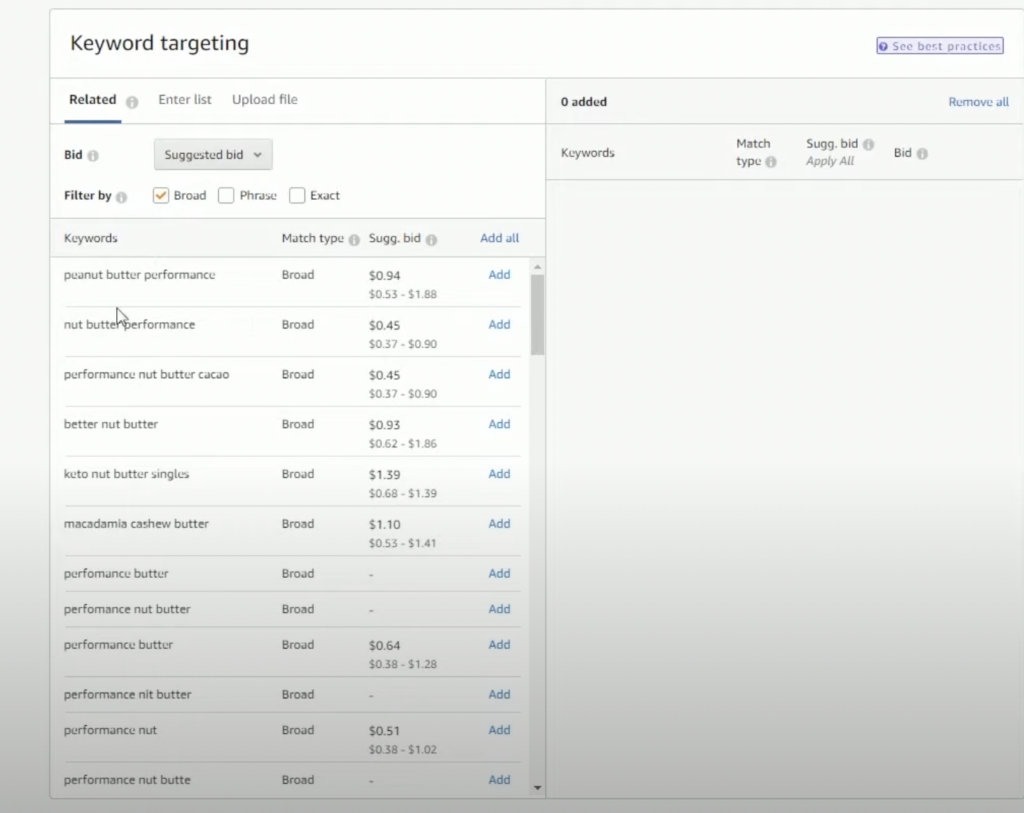
2. Select the keyword you wish to add
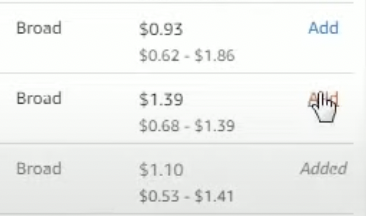
If Amazon doesn’t recommend any keywords, you can simply navigate to “Enter List” and paste the list of keywords you wish to target.
2.1 Paste the list of keywords in “Enter list”
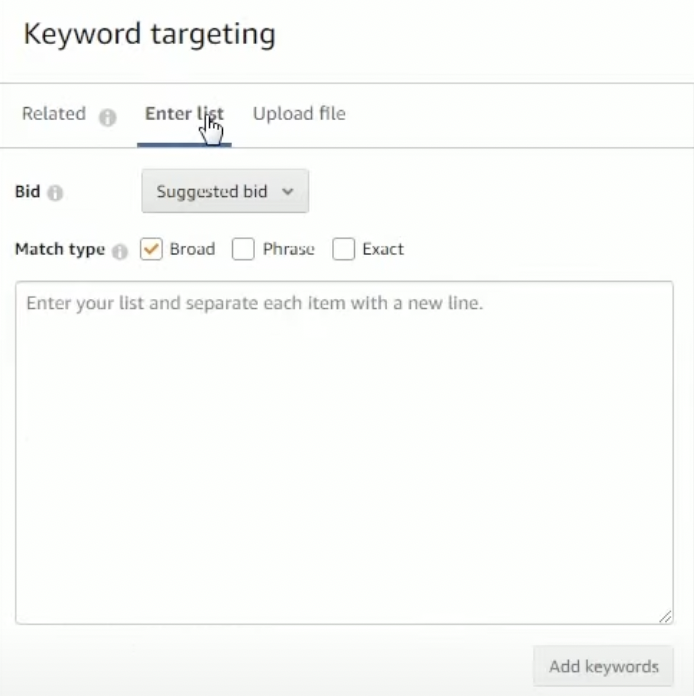
3. Adjust your bid amount
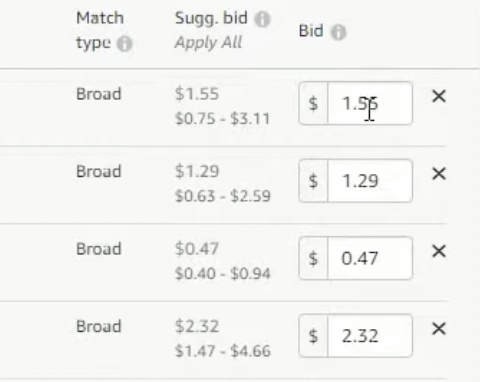
You can adjust your bid if you think the amount is too expensive for you.
How to do product targeting in Amazon?
Basically, this allows you to show your products in your competitor’s product pages. Below is the Amazon tool to help you do it.
1. Select Product Targeting
Instead of selecting Keyword targeting in the campaign settings, choose “Product targeting”.

2. Select the categories you wish to target
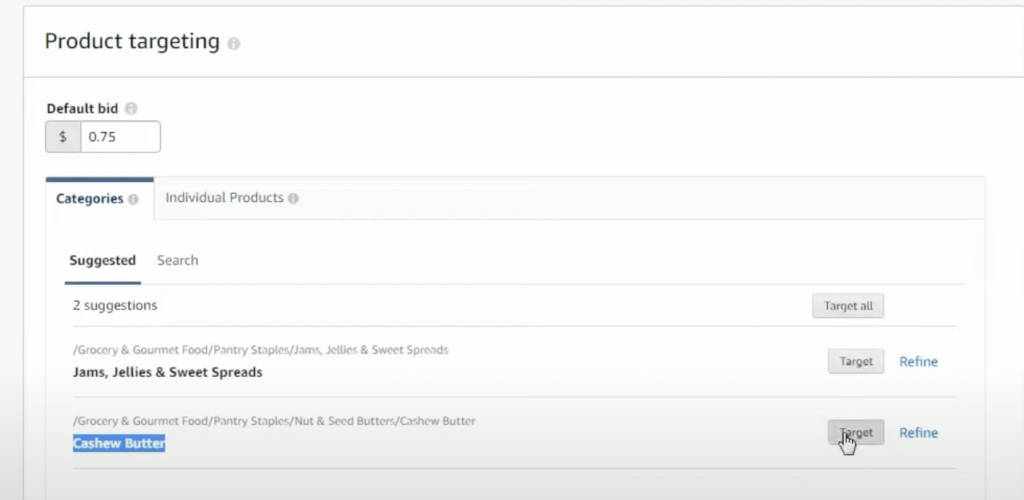
You can target entire categories, or instead go after individual products. Amazon will give you a list of products that it think is relevant. However, you will need to go through the list by yourself in order to ensure that the products you target are the most relevant.
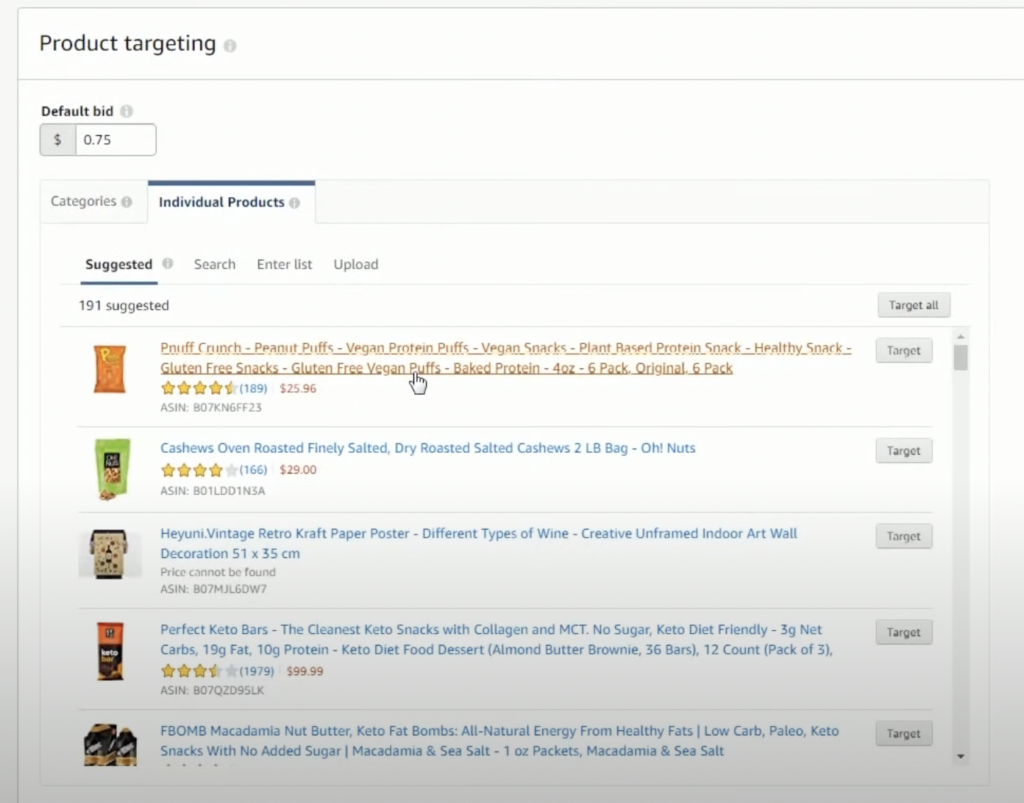
3. Scroll down and select bid amount
This basically means how much you are willing to pay per ad click.
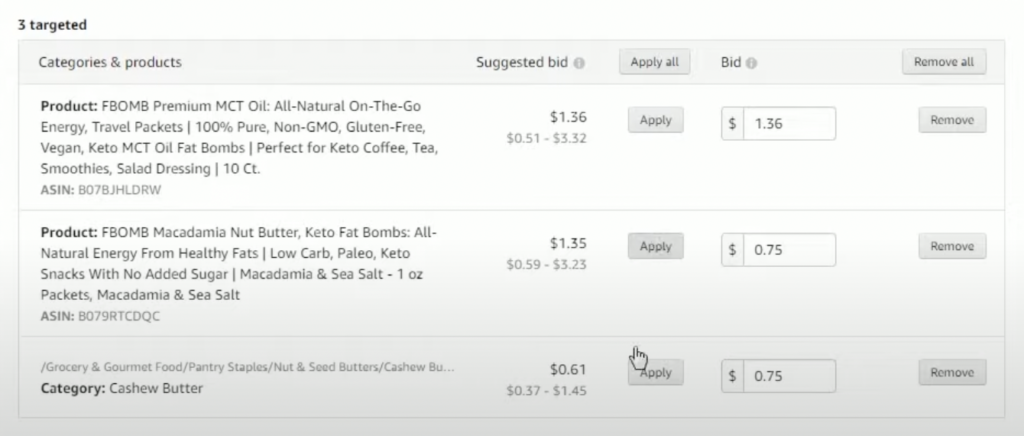

Want more sales? Want more leads?
See how First Page can drive insane sales. See real results from your SEO campaign! Contact us!
How to add Negative Keywords?
Negative keywords are used to stop ads from appearing for search queries that are deemed irrelevant or less important. This helps to reduce ad spend wastage. For example, if you wish to exclude any keywords that are related to “cheap” from showing your product, you can use negative keywords to enforce this.
1. Select a campaign from the “All campaigns dashboard”
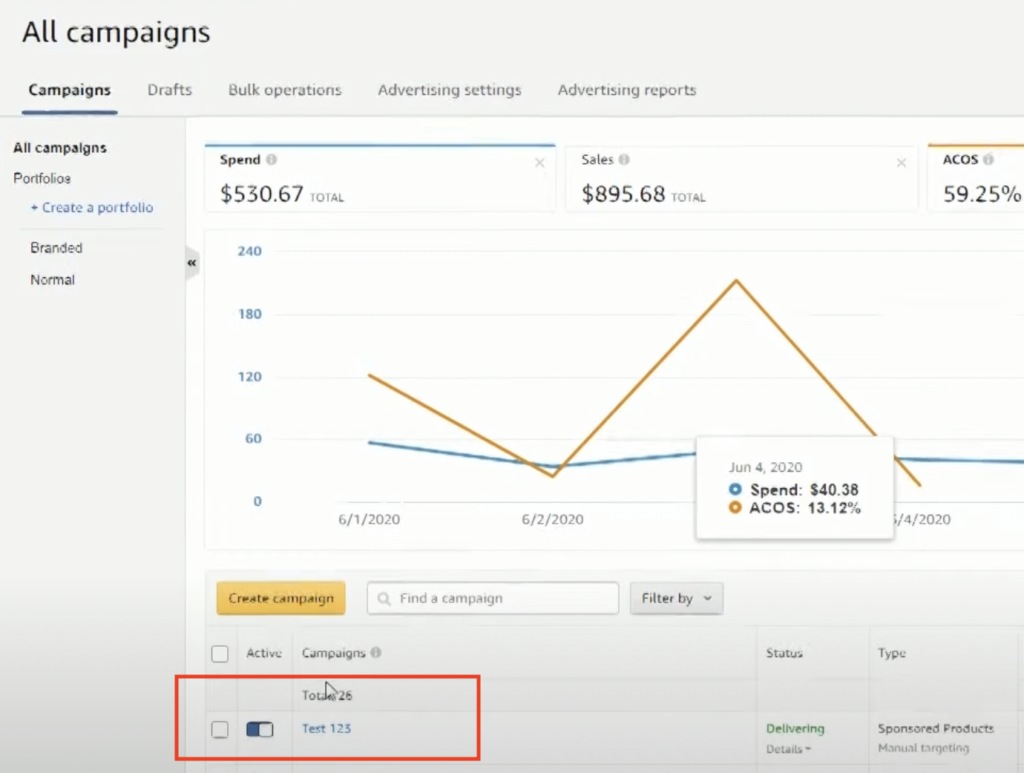
2. Click on Negative Keywords
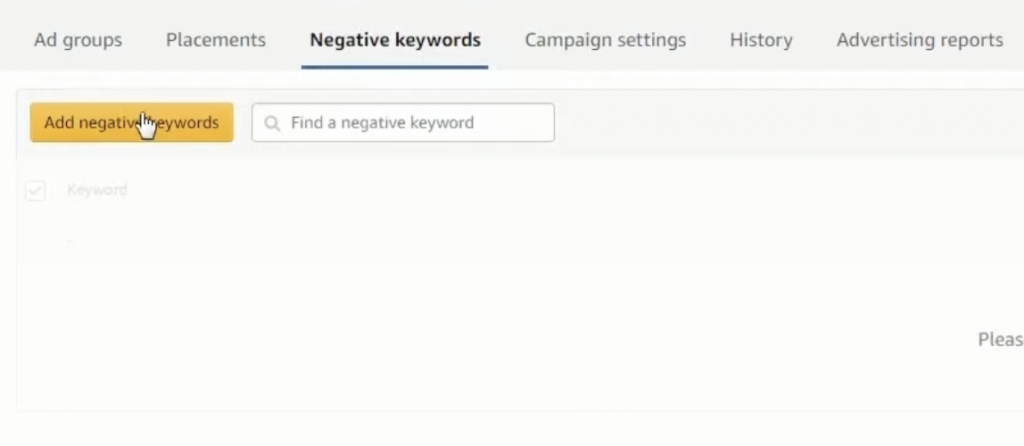
3. Paste in the list of keywords > Save
Choosing “Negative exact” will block exact match terms. For example, If you add “twin-sized bed” as a negative exact, your ads will no longer show for “twin-sized bed” but may still be served for “double-sized bed”
Choosing “Negative phrase” will have a larger impact, but also comes with additional risk. Any search term containing the word you’ve added as a negative phrase will be blocked, so we advise caution when using this option.
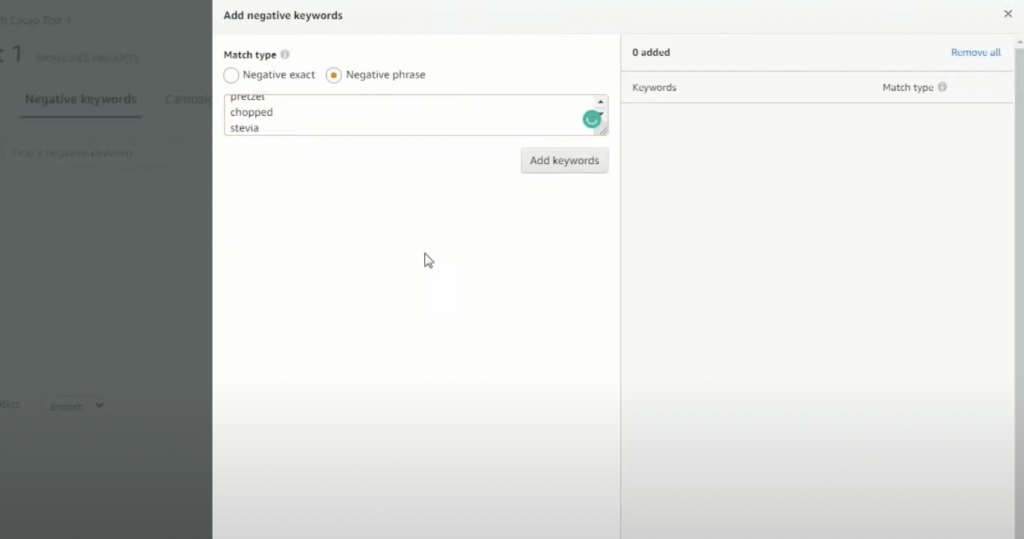
Negative exact is usually the safest option we choose for our clients.
Like to learn more about well-crafted headlines for your ads?
We have a great blog post you can read to learn more fast!
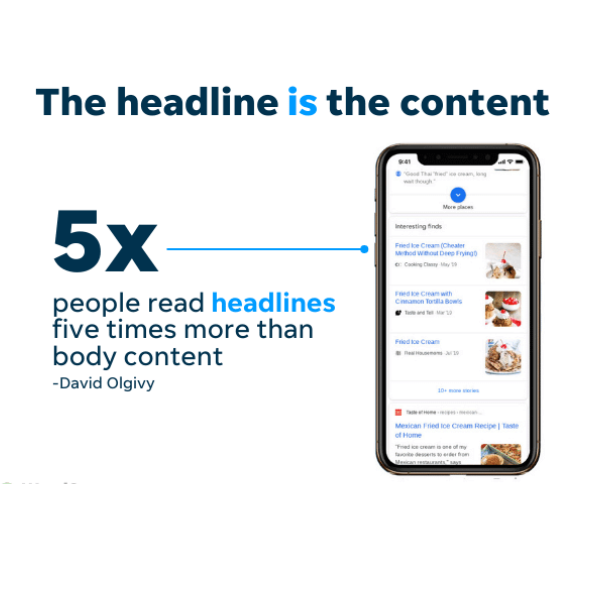
Final thoughts
At First Page, we provide professional Amazon PPC services. These services can help you improve your visibility on Amazon results pages.
Although you should still pay attention to SEO, you can start with a PPC strategy to boost your rankings until proper SEO can be established, especially if you’re a E-commerce seller.
If you want a more in-depth understanding of which Amazon PPC strategies to employ, get a free analysis from us at First Page here.

Ready to reach page one on Google?
We know you want to make real money! Get ready to convert customers like crazy. Please do not delay. Contact us today!
Unsure of getting in touch? We don’t bite! If you’d prefer, we invite you to learn more about our SEO services. Don’t delay, get ahead of the competition now!
What other marketing tactics can you use to beat your competition?
Here are some helpful marketing tactic blogs that can help you break all your past sales records, and your competition in the process:
- Perfect Your Email Marketing Strategy Now
- What Are The Top PPC Ideas You Ought To Know?
- Social Media Strategies: Successful Ones You Can Learn From
- Helpful Content Tips: Get Noticed Before The Competition
- 6 Easy Digital Marketing Hacks To Increase Your Leads
Are you a busy business owner? You may not have the time to run the marketing tactics you need to make money regularly. If this is the case, we encourage you to review some of our strategic marketing services to drive more sales:
- SEO for your business to drive qualified leads
- Social media management for improved brand awareness
- Linkbuilding to drive organic traffic to your website
- Top converting landing pages to convert your leads
- Email marketing campaigns to bring in referrals


